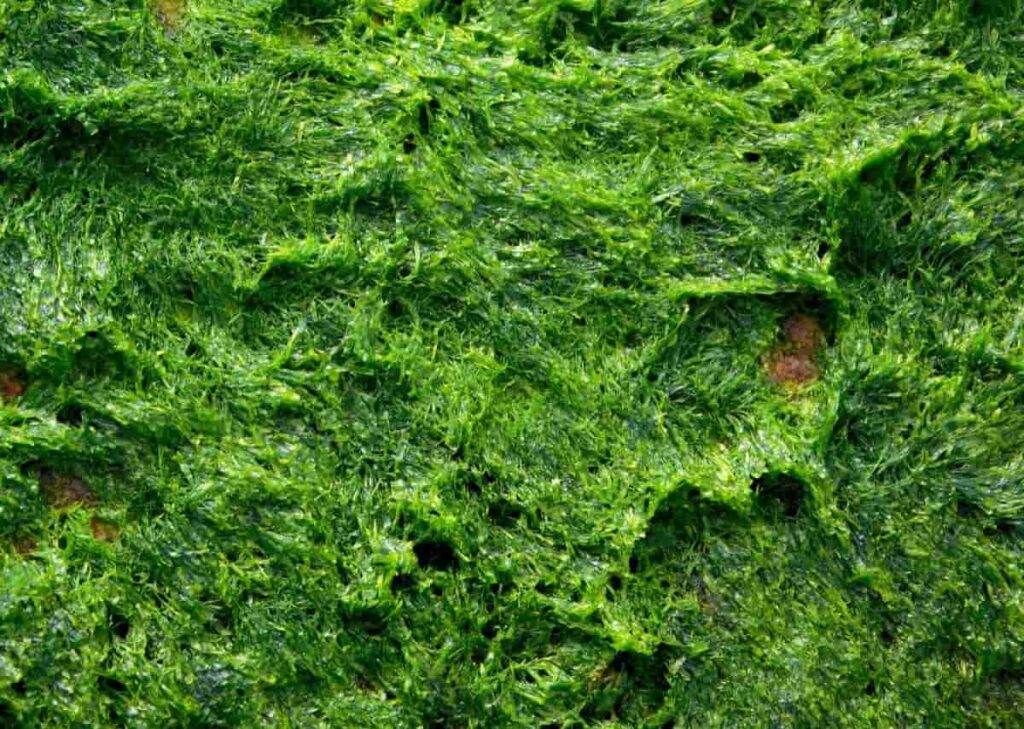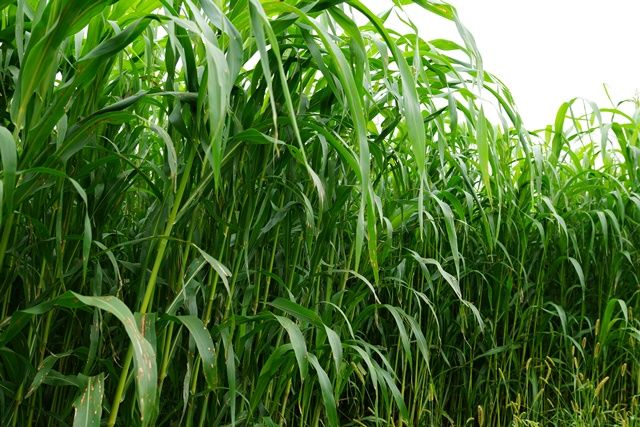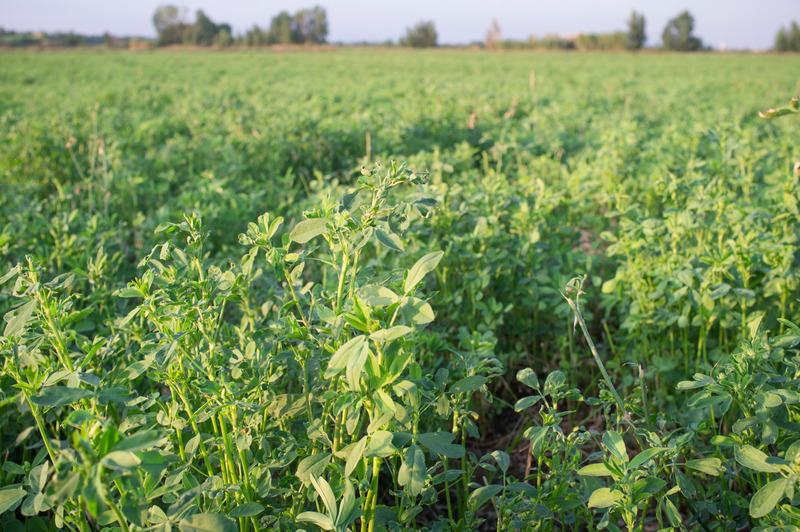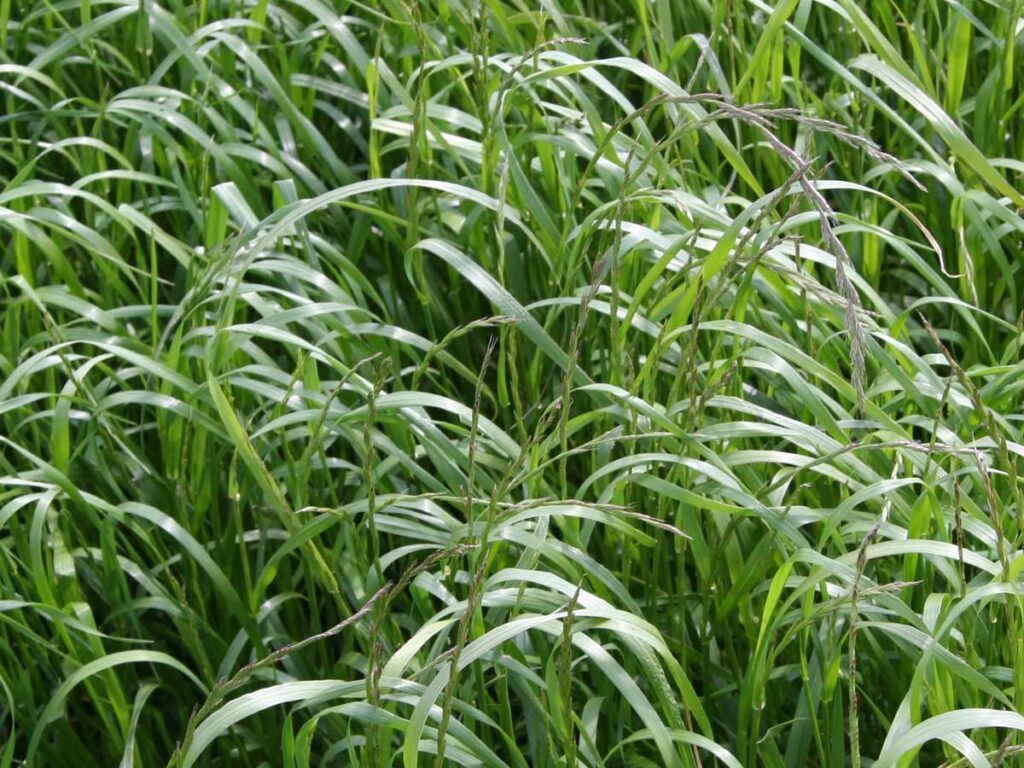Importing green fodder for animals typically occurs when local production is insufficient to meet the demand or when certain types of fodder are required for specific nutritional needs. Here’s how the process of importing green fodder for animals generally works:Importing green fodder can be a costly process due to transportation expenses, import taxes, and quality control measures. Therefore, it’s usually considered when local production is insufficient or during specific circumstances where the nutritional needs of the animals cannot be met by locally available fodder sources

Spirulina
Spirulina, a nutrient-rich blue-green algae, is renowned for its exceptional nutritional content and potential health benefits. Thriving in alkaline freshwater environments, this microscopic organism has gained attention as a superfood due to its dense concentration of essential nutrients.
Highly regarded for its protein content, spirulina is considered a complete protein source, containing all essential amino acids crucial for bodily functions. Additionally, it boasts an array of vitamins, including B vitamins like B12, and minerals such as iron and magnesium, making it a valuable dietary supplement, especially for vegetarians and vegans seeking these nutrients.
Its antioxidant properties, attributed to compounds like phycocyanin, contribute to its potential in reducing oxidative stress and inflammation, supporting overall health. Some research suggests it may aid in lowering LDL cholesterol levels and improving immune system function, although more studies are ongoing to confirm these potential benefits.
Spirulina’s versatility extends to various forms, including powder, tablets, and capsules, making it convenient for consumption as a dietary supplement. However, due to potential contamination risks in unregulated environments, sourcing spirulina from reputable sources is crucial.
While spirulina’s nutrient density and potential health benefits are promising, individuals with certain health conditions or allergies should consult healthcare professionals before incorporating it into their diet.

Azolla
Azolla, a small aquatic fern often referred to as “duckweed fern” or “mosquito fern,” thrives in freshwater habitats like ponds, ditches, and slow-moving water bodies. This remarkable plant has garnered attention for its multifaceted uses and ecological significance.
Renowned for its nitrogen-fixing ability, Azolla forms a symbiotic relationship with a cyanobacterium, enabling it to convert atmospheric nitrogen into a usable form, enriching the surrounding environment with this essential nutrient. This trait makes it an invaluable natural fertilizer, particularly in rice paddies, where it’s employed as a biofertilizer, enhancing soil fertility and boosting crop yields.
In addition to its agricultural significance, Azolla serves as a beneficial livestock feed. Its high protein content and nutrient density make it an attractive supplementary feed for poultry, pigs, and even fish. Farmers incorporate it into animal diets to improve growth rates and overall health.
Moreover, Azolla contributes to ecological balance by serving as a natural biofilter, purifying water bodies by absorbing excess nutrients and pollutants. Its rapid growth rate aids in controlling algae and preventing the proliferation of mosquitoes by covering water surfaces, hence its nickname “mosquito fern.”
As a versatile plant with agricultural, nutritional, and environmental benefits, Azolla continues to be studied for its potential in sustainable agriculture, biofertilization, and environmental remediation, showcasing its diverse contributions to both farming practices and ecosystem health.

Maize, or corn,
Maize, or corn, is a top fodder crop due to its high energy grains. It’s ensiled to preserve its value for livestock feed. Harvested in its milky or dough stage, it’s rich in energy, feeding dairy and beef cattle for growth and milk production. Its versatility as silage ensures year-round feeding.
Maize, known as corn, reigns as a premier fodder crop owing to its energy-dense grains. Ensiling, a preservation technique, safeguards its nutritional potency for livestock feed. During the milky or dough stages, maize is harvested, boasting high-energy content vital for nurturing dairy and beef cattle, fostering their growth and enhancing milk production. Its significance lies in being a consistent year-round feed due to its adaptability as silage.
This crop’s productivity and versatility are pivotal. Its high yield per acreage and energy-rich grains make it a staple in livestock diets. Maize’s role extends beyond mere sustenance; it serves as a pivotal source of carbohydrates, propelling livestock performance. Harvested at optimal stages, maize ensiling encapsulates its nutritional bounty, ensuring a steady supply for livestock during lean seasons. Its dual-purpose nature, catering to human consumption as grain and fulfilling livestock nutritional needs as silage, amplifies its agricultural importance, rendering it indispensable in sustaining livestock health and productivity.

Sorghum,
Sorghum, a hardy crop, flourishes in arid and semi-arid areas, showcasing remarkable resilience in challenging climates. Its exceptional adaptability to drought conditions renders it a beacon of hope in regions with limited water availability. Serving as a resilient source of sustenance, sorghum emerges as a vital component in agricultural landscapes prone to water scarcity.
This crop’s robust nature extends beyond mere survival; it becomes an asset in providing quality forage for livestock. Its ability to thrive despite limited water resources allows it to yield significant quantities of nutritious forage, enriching the diets of grazing animals. Sorghum’s foliage, rich in essential nutrients, serves as a valuable feed option, particularly in areas where other crops struggle to flourish.
Moreover, sorghum’s tenacity to withstand adverse environmental conditions, including heat and minimal rainfall, positions it as a reliable source of sustenance for livestock, ensuring consistent fodder supply even during periods of climatic duress. Its prowess in thriving under harsh circumstances underscores its significance in sustaining livestock in regions where conventional crops might falter, thereby cementing its role as a resilient and indispensable fodder crop.

Sorghum,
Alfalfa, a perennial legume, stands as a nutritional powerhouse, boasting high protein content and abundant nutrients. Its perennial nature grants it longevity, ensuring consistent yields year after year, making it a cornerstone in livestock farming.
This legume’s exceptional nutritional profile elevates its status as a prime choice for livestock feed. Its rich protein content, coupled with a diverse array of essential vitamins and minerals, makes it a sought-after fodder option. Whether harvested for hay or grazed upon directly by livestock, alfalfa serves as a reliable source of nourishment.
Its versatility in usage adds to its appeal. Alfalfa finds purpose in hay production, providing a nutrient-dense forage when preserved. Additionally, when utilized as grazing forage, its lush foliage meets the dietary needs of livestock, promoting health and growth. Its contribution isn’t merely in providing sustenance; it’s a key player in enhancing the overall nutritional balance of livestock diets.
Alfalfa’s resilience, coupled with its rich nutritional composition, cements its role as a perennial favorite in livestock agriculture. Its ability to consistently deliver vital nutrients makes it a staple forage, contributing significantly to the health and productivity of animals across diverse farming practices.

Clover,
Clover, a nitrogen-fixing legume, stands out as a valuable contributor to pasture enhancement and soil vitality. Its unique ability to fix nitrogen from the air into the soil elevates its significance in agricultural landscapes.
This legume’s role extends beyond its nutritional value for livestock; it serves as a natural partner to grasses, enriching pasture quality. When intermixed with grasses, clover dynamically improves the nutritional content of grazing areas, enhancing the overall feed quality available to livestock. Its nitrogen-fixing prowess allows for increased soil fertility, aiding in the growth of surrounding vegetation and supporting a more robust ecosystem.
Moreover, clover’s inherent capacity to fix nitrogen helps reduce the reliance on synthetic fertilizers, promoting sustainable farming practices. Its ability to bolster soil health through nitrogen enrichment benefits not only the immediate grazing areas but also the broader agricultural landscape, fostering a more ecologically balanced environment.
Clover’s role as a nutritive supplement for livestock and its symbiotic relationship with grasses underscore its importance in pasture management. Its multifaceted contributions to enhancing pasture quality, enriching soil fertility, and promoting sustainable farming practices solidify its position as an indispensable asset in agricultural ecosystems.

Ryegrass,
Ryegrass, known for its rapid growth and palatable nature, holds a pivotal role in livestock grazing and pasture composition. Its rapid growth rate allows for quick establishment and regrowth, making it a preferred choice in pasture management.
This grass’s fast-paced development contributes significantly to grazing rotations, ensuring a constant supply of fresh forage for livestock. Its palatability makes it appealing to animals, encouraging consistent consumption and supporting their nutritional needs.
Moreover, ryegrass stands as a cornerstone in pasture blends specifically formulated for livestock. Its inclusion in these mixtures enhances the overall quality of grazing lands, offering a diverse and nutritious forage base. When combined with other complementary species, it creates a balanced diet for grazing animals, ensuring a more holistic and complete nutritional intake.
Ryegrass’s ability to establish quickly, its palatable nature, and its role in diversifying pasture blends highlight its significance in sustaining livestock. Its contributions to maintaining a consistent forage supply and enriching the nutritional content of grazing areas solidify its position as a fundamental component in pasture management strategies aimed at optimizing livestock health and productivity.
These crops are cultivated with specific methods and timelines for harvesting to ensure maximum nutritional value for livestock. They can be fed fresh or conserved as silage, hay, or dried fodder for use during periods when fresh growth is limited.
Farmers consider factors such as climate, soil type, water availability, and nutritional requirements of the animals when selecting and cultivating green fodder crops for their livestock.
